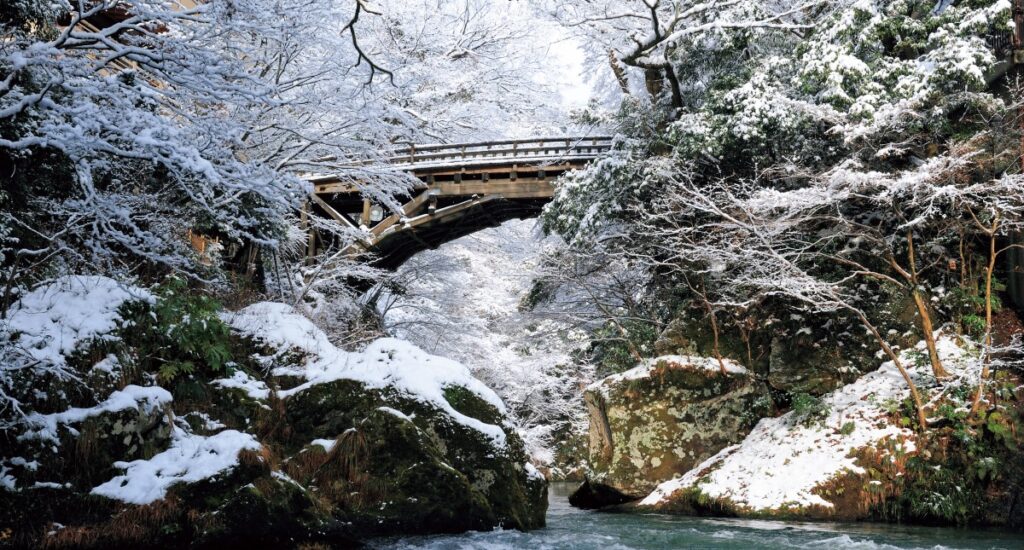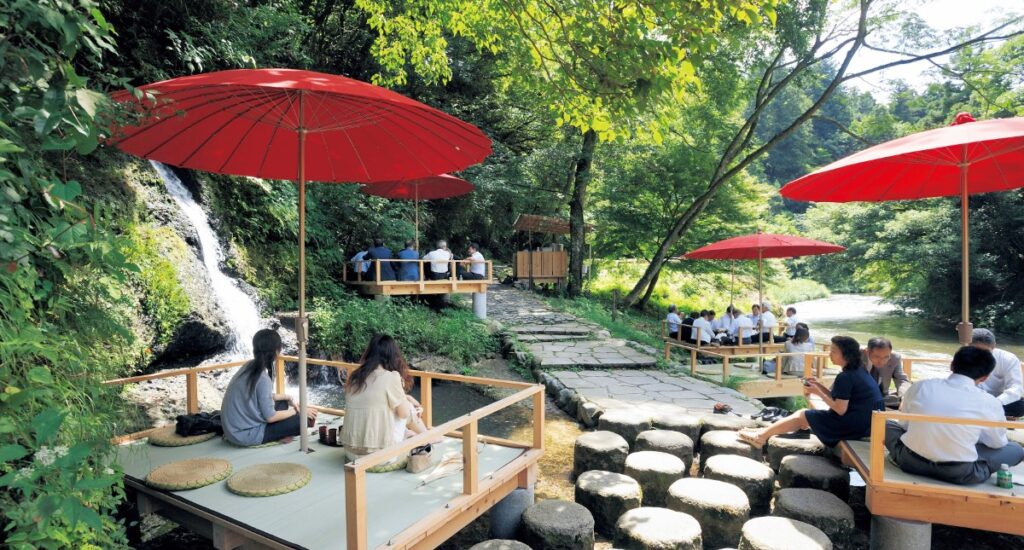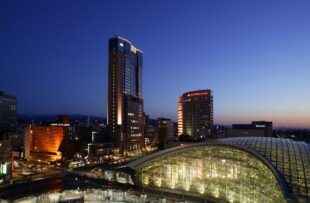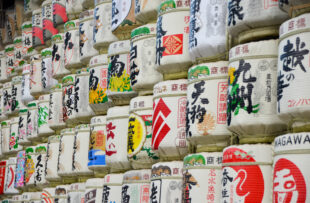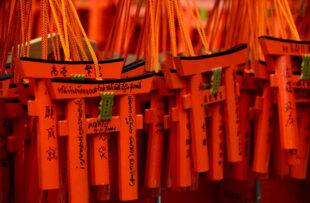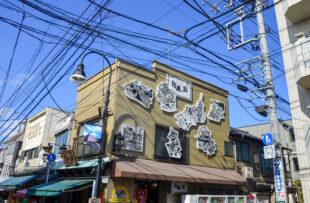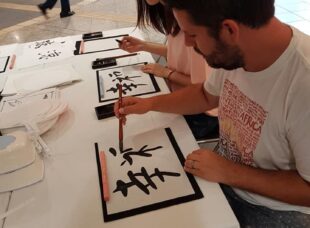Kaga Onsen is made up of four charming hot spring towns, less than an hour by train from the city of Kanazawa. Public bath houses – or soyu – lie in the middle of each town, giving visitors an opportunity to experience a more traditional and historical way to soak in hot-spring water. The most interesting of these towns, Yamashiro Onsen and Yamanaka Onsen, are beautiful places to take a wander, but also showcase some of the famous crafts of the Ishikawa region.
Yamashiro Onsen has a long and storied history, with medicinal waters discovered by a monk on pilgrimage over 1300 years ago. The attractive soyu is worth a visit just to see the beautiful architecture, but the modern facilities inside will allow you to join the locals, unwinding in gender-separated baths for just a few hundred Yen per person. The notable pottery of this town, known as Kutaniyaki, can be seen in the Exhibition Hall nearby, displaying antique and modern creations, and even running hands-on workshops.
Yamanaka Onsen was founded at a similar time, and also boasts a stunning bathhouse in the main square for public use. For the more modest visitors, an ashiyu – or footbath – can be enjoyed for free just outside, perfect to take a break after a long day of strolling ancient streets. The true highlight of the town though is a visit to Kakusenkei Gorge, a short but scenic walking trail that can be taken throughout the seasons. Various bridges cross the gorge, some modern architectural curiosities, others traditional wooden affairs, and a cafe with platforms built over the river marks the ideal spot to sit and contemplate the view.
If you are visiting the Kaga Onsen region by car, a visit to the temple of Natadera should be on the agenda. Stunning natural rock formations, such as cliffs and caves, emerge from the thick forested landscape, a reminder of the volcanic eruptions that formed this part of Japan. The temple itself is built within the caves to highlight the harmony between human religion and natural beauty. Buddhist elements also intertwine with Shinto features, such as vermillion torii gates, showing that both beliefs have survived in unison throughout the centuries.




